European beeches are classic hedge plants and look a bit more noble than hornbeams. Our expert tips will help you keep it in shape as a hedge.
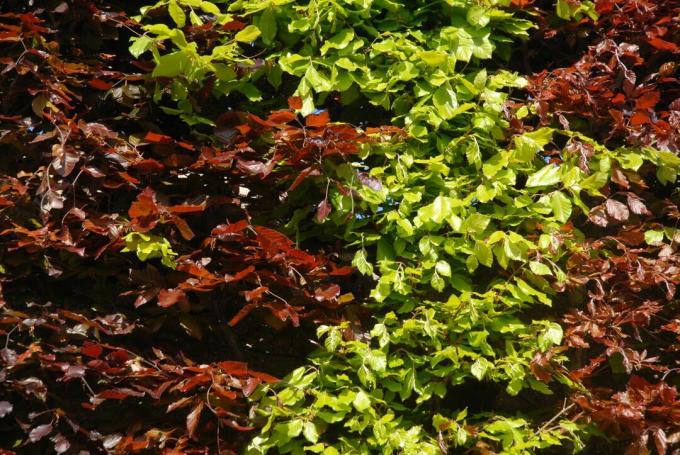
The European beech (Fagus sylvatica) is colloquially called beech, because it is the only one Fagus-Beech type in Central Europe. With 15% it is the most common deciduous tree in German forests. But a beech is not only good as a mighty tree, with the right cut and a little care it can also be transformed into a wind-resistant and undemanding hedge. Even in winter, the deciduous tree offers good privacy protection, because most varieties do not lose their autumn leaves until spring. Therefore, beeches are the hedge plants, especially for promoters of the local flora.
contents
-
Buy red beech and beech hedge
- How much does the beech hedge grow and how big can it get?
- European beech hedge: healthy plants
- Buying the beech hedge: bale goods or container plants?
-
Plant the beech hedge
- When is the beech hedge planted?
- Procedure for planting the beech hedge
- European beech hedge: the correct planting distance
- Water the beech hedge after planting and mulch
-
Maintain the red beech hedge properly
- Water and fertilize the beech hedge properly
- European beech hedge in winter
-
Cut and shorten the beech hedge
- European beech hedge: when to cut?
- European beech hedge: how much cut?
- Radically shorten the beech hedge
Buy red beech and beech hedge
Seedlings for your new property delimitation or the long-awaited windbreak are available in the garden center, in the tree nursery or can be purchased online. But the choice is not limited to the selection of the most beautiful variety for you. It must also be considered whether container or bale goods should end up in the ground.
How much does the beech hedge grow and how big can it get?
If the location is well chosen, European beeches grow rapidly at a young age. Up to the age of 50 years, a height and width growth of 40 to 70 cm per year is achieved. The beech has a real growth spurt between April and May. The shoots then hang a little limply to the ground. However, this subsides as the lignin formation progresses over the course of the year. The red beech owes its name to the reddish color of the young shoots. If the common beech is not cut into a hedge, the trees can reach heights of up to 30 meters. The trunk reaches a circumference of up to two meters.

European beech hedge: healthy plants
When bought, bale goods usually look more like a dead stick than the beginning of a magnificent hedge. However, if the plants are healthy, they will come out vigorously in the same year. When unpacking the plant, pay attention to whether any injuries can be seen. This also applies to container goods. In addition, the plants should have a size of at least 60 cm when buying.
Buying the beech hedge: bale goods or container plants?
Bale goods are cheaper, but have to be buried directly in the ground after purchase. Container goods in pots are more expensive and heavier, the plants do not have to be planted immediately. Both variants are equally good for growth. Anyone who can get their hedge in the ground in one weekend saves money with bare-root plants. For those who want to take a little more time, container goods are better suited.
Plant the beech hedge
There is not much to consider when choosing a location for your hedge. Find a sunny to partially shaded spot. Young European beeches in particular are relatively shade-tolerant. Wind is also well tolerated after it has grown, which is why the hedges can serve as a wonderful wind protection. When it comes to the soil, it must be ensured that clay soils are not well tolerated due to the increased risk of waterlogging. Deep, nutrient-rich, permeable sandy to loamy soils are preferred. The plants are very compatible with the pH value of the soil. Whether acidic or alkaline, the European beech thrives.
When is the beech hedge planted?
The planting time for European beeches is late winter to early spring. So that the seedlings feel completely comfortable, the planting should take place on an overcast and windless day. In addition, the soil should not be too wet and under no circumstances should it be frozen.

Procedure for planting the beech hedge
A good preparation of the soil is particularly important here. This preparation is best done in autumn. Otherwise you have to plow through the hard winter earth. Loosen up the entire area intended for the future hedge by digging up to three times the depth of the root ball. After that, the earth is mixed with ripe manure or compost. This improves the permeability and soil quality. Proceed as follows for later planting:
- Ball goods: put the roots in water for several hours before planting
- Removal of all weeds in the planting area
- Stretch a straight line to straighten the hedge
- Planting hole / trench: 2 - 4 times as wide as the root ball and flat; Pile up soil slightly in the middle
- Remove all injured roots with clean, sharp secateurs
- Put seedlings on the elevation in the planting hole; Carefully place roots on the sides
- Fill the planting hole with soil so that all roots are covered and press down
- Place the pouring edge and press it on
The accumulation of soil in the root area must be avoided at all costs.
tip: If you are struggling with very poor soil, you can also use a high-quality organic soil like ours Plantura organic universal soil use to plant your beech hedge.
European beech hedge: the correct planting distance
Untrimmed, the crown can shade an area of up to 600 m². Planted in a hedge, the trees are not nearly as wide. With row planting, two to four plants are planted per meter. A staggered double row can also be created so that the hedge grows nice and tight. The following applies here:
- Bale goods: 5 - 7 plants per meter
- Container goods: 4 - 6 plants per meter
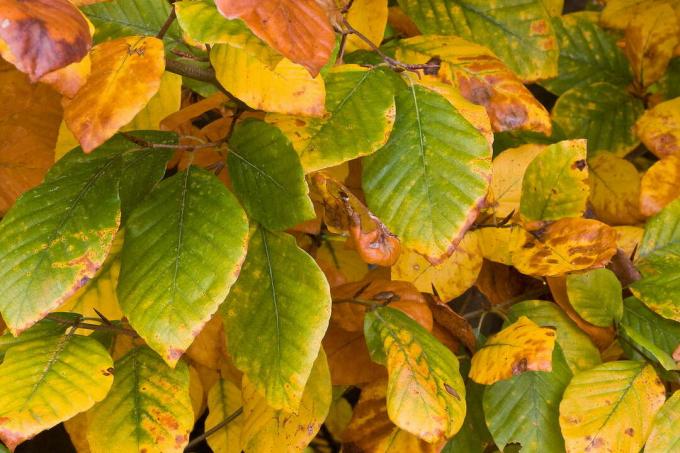
This sounds like a lot of scrubbing in later times, but you have to assume that not every seedling will get through. The resulting gaps are then closed by the surrounding seedlings and provide the necessary space. However, it is not only important to pay attention to the distance between plants and neighboring plants. Maintain at least the legally prescribed distance of 50 cm to the property line or to walls. The hedge can be kept in check around the top, but the roots like to blast the asphalt or lift pavement slabs.
Water the beech hedge after planting and mulch
After planting it is poured vigorously. Fill up the pouring rim and let the water seep away. This will remove air bubbles and the earth will settle. Last but not least, a good layer of mulch, lawn clippings, leaves or mature manure lands on the root area. This layer insulates, protects against evaporation and keeps unwanted weeds at bay. Since the seedlings are still very sensitive, a protective cover for the trunk is recommended. This protects the young building from wind and pests. Spiral plastic tree guards that expand as the tree grows are best.
More information and tips on the Planting European beech hedges You will find here.
Maintain the red beech hedge properly
European beeches are the ideal hedge planting for beginners because they do not need a lot of maintenance. Neither constant fertilization and watering, nor winter protection are required once the plants have established themselves.
Water and fertilize the beech hedge properly
In the first two years in particular, your hedge is dependent on additional watering. This is only necessary when the soil around the trunk is dry. When watering, keep in mind that European beech cannot tolerate waterlogging or prolonged periods of drought. It is fertilized once a year with slow release fertilizer, compost, lawn clippings or horn shavings. Alternatively, liquid fertilizer in the irrigation water is regularly fertilized during the growth phase. Make sure you use a primarily organic fertilizer. This has a depot effect and is much more environmentally friendly than the mineral alternative. Also ours Plantura organic universal fertilizer is such a primarily organic slow release fertilizer. It can be put into the planting hole when the beech hedge is planted and is applied in spring in the following years. More details on the right one Fertilizing (red) beech hedges You will find here.
A tip for opponents of leaf raking: Leave the leaves underneath the hedge, this will inhibit the growth of weeds - thus double labor savings. The leaves also serve as an additional source of nutrients for the trees and as protection in winter.
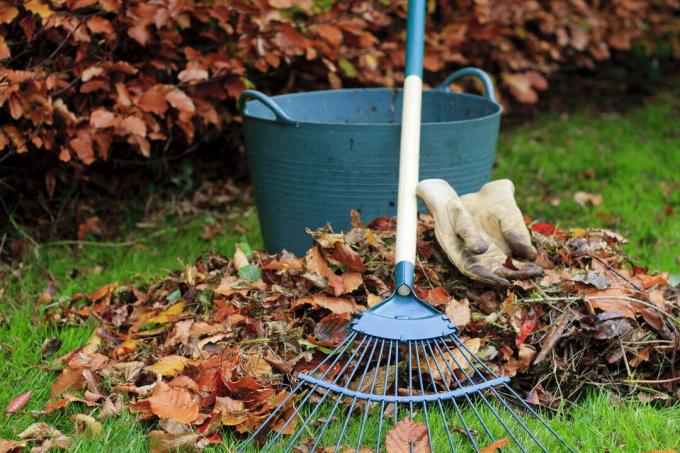
European beech hedge in winter
The European beech is a deciduous deciduous tree that is native to us and it copes perfectly with our winters. In autumn the leaves shine in the typical autumn colors until they have reached their final brown phase. With many varieties, the leaves are not shed until spring, so the hedge also offers good privacy protection in winter. Our privacy is of course not the reason for keeping the leaves. They serve as additional protection because the trees tend to develop sunburn. Protect young, deciduous trees with burlap or sticks. The plants have no problem with the temperatures. They are hardy to -30 ° C. Well grown hedges therefore do not need additional winter protection. A protective layer of mulch is spread over young hedges. This protects against evaporation, which is much more likely to be a problem than the frosty temperatures. In addition, additional watering is used on frost-free, dry days if necessary.
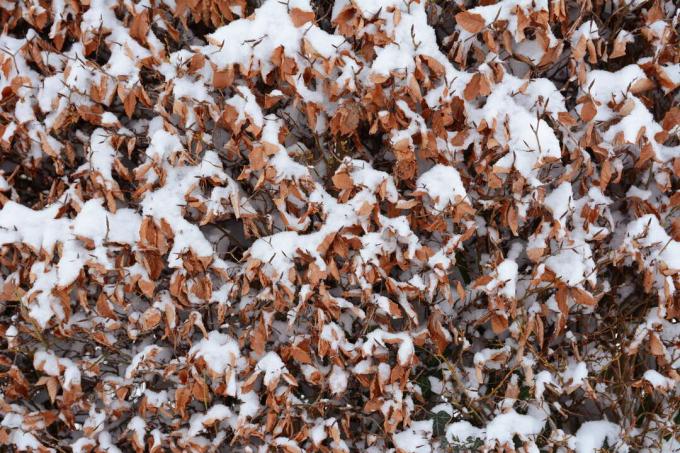
Cut and shorten the beech hedge
Beeches grow very quickly, especially when they are young. A regular cut is essential so that your hedge does not grow too much over your head and you generate nice branches.
European beech hedge: when to cut?
For optimal hedge growth, it is cut back twice a year. The first cut is made on a frost-free, dry and overcast day in March - before the beech's first growth spurt. After a mild winter, pruning takes place in February. Then between June and August the scissors are used a second time. This means that new shoots have enough time to mature before the first frost. Sick and damaged shoots are removed all year round.
European beech hedge: how much cut?
You don't have to be squeamish about a beech hedge. A strong pruning ensures a nice, dense growth. However, this more pronounced cut should be reserved for the first cut. How exactly the master Cut in a beech hedge what to look out for and what to consider when shaping it, you can find out here. The second cut is only moderately thinned and unwanted side shoots are removed. Otherwise you get into the enclosure of breeding birds. If you want to allow the local bird families to rest, postpone the second cut to a point in time after the breeding season or just cut back very carefully. The breeding season usually ends at the end of June.
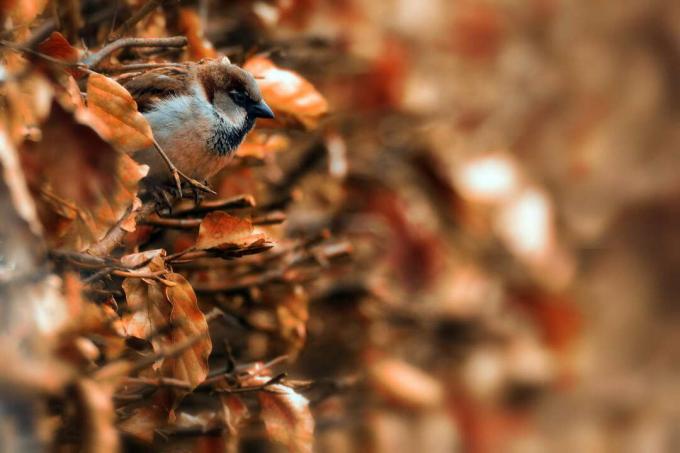
Radically shorten the beech hedge
In the case of older specimens, radical pruning is well tolerated and should take place every few years. With the rejuvenation cut, very old branches are removed and the hedge is thinned out inside. All shoots can also be shortened into the old wood. Leave at least three eyes for new shoots to form. Rejuvenation is used to make way for new shoots and takes place in February or March.
In autumn you can find large amounts of it on the ground Beechnuts Find. We introduce you to the fruit of the European beech in this article.



